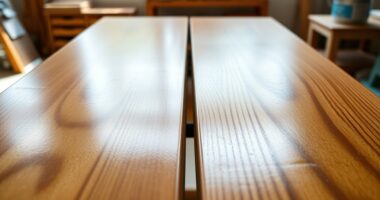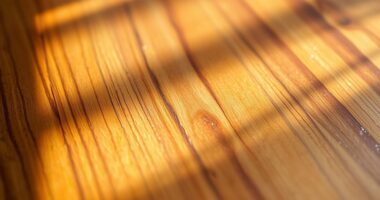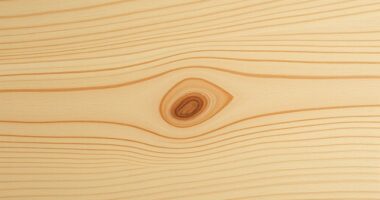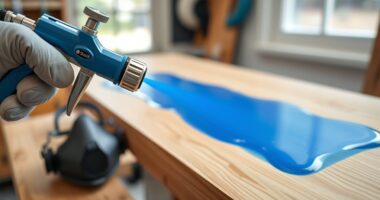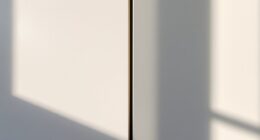To create custom colors and patterns with stain and dye combinations, you can mix different stains or dyes to achieve unique hues and effects. Experiment with layering, blending, or adding dyes to stains to enhance natural wood grain or fabric textures. Using heat, fixatives, and controlled application helps set vibrant colors and intricate designs. If you keep exploring, you’ll discover more tips and techniques to turn ordinary surfaces into personalized works of art.
Key Takeaways
- Combine different stains and dyes to achieve unique, customized colors tailored to your project.
- Layer and blend dyes for complex patterns, gradients, and textured effects.
- Understand material reactions to select appropriate stains for wood or dyes for fabrics.
- Experiment with mixing colors to discover new shades beyond store-bought options.
- Use techniques like deep penetration or chemical bonding to enhance pattern depth and color longevity.
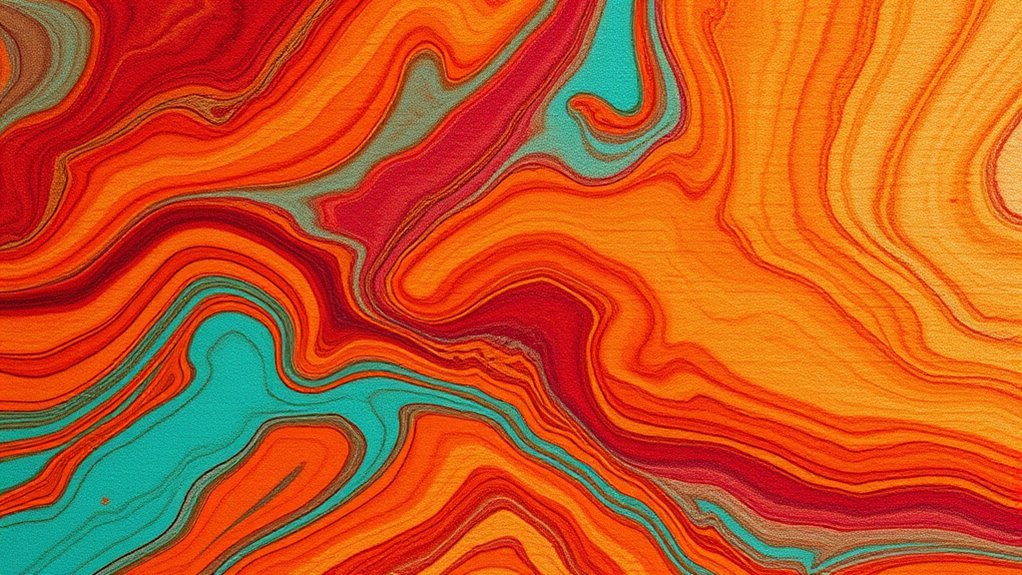
Have you ever wondered how different stain and dye combinations can transform fabrics and surfaces? When you experiment with these techniques, you unlock a world of possibilities for creating unique looks and personal touches. One of the simplest yet most effective ways to explore this is by working with natural wood and synthetic fabrics. These materials respond differently to stains and dyes, offering a diverse range of effects that can elevate your craft projects or home decor. Understanding material reactions is essential to achieving the desired results and mastering these techniques. Natural wood, for example, has a porous surface that readily absorbs stains. When you apply a stain, it highlights the wood’s grain, enhancing its natural beauty. You can use a variety of stains—oil-based, water-based, or gel—to achieve different tones and finishes. Light stains can give your wood a subtle, warm glow, while darker stains create rich, dramatic contrasts. Mixing dyes into the stain can further customize the color, allowing you to produce shades that are impossible to find in store-bought finishes. For instance, combining a deep blue dye with a traditional wood stain can result in a stunning, customized hue that perfectly complements your space. Synthetic fabrics, on the other hand, are more resistant to traditional stains but respond beautifully to dyes specially formulated for synthetics. When you work with synthetic fabrics, you want to choose dyes that are designed to bond with plastic fibers like polyester or nylon. These dyes often require heat or fixatives to set properly, but the results are vibrant, long-lasting colors. Mixing dyes opens doors to creating patterns or gradients, giving your fabrics a personalized touch. For example, you might blend a bright red dye with a hint of orange to craft a fiery, custom shade that makes your project stand out. Layering different dye colors can also produce complex, textured effects that add depth and visual interest. The key to successful stain and dye combinations is understanding how each material reacts. Natural wood benefits from stains that penetrate deeply, revealing intricate grain patterns, while synthetic fabrics respond best to dyes that bond chemically with the fibers. By experimenting with different combinations, you can develop an eye for what works best and discover new artistic possibilities. Whether you’re aiming for a rustic, weathered look on wood or a vibrant, eye-catching pattern on fabrics, combining stains and dyes empowers you to craft uniquely personalized items. With a little practice, you’ll find that these techniques turn ordinary surfaces into extraordinary works of art, reflecting your individual style and creativity.
Frequently Asked Questions
Can Stain and Dye Combinations Be Used on Synthetic Fabrics?
Yes, you can use stain and dye combinations on synthetic fabric, but you need to verify dye compatibility first. Synthetic fabrics often require specific dyes designed for their material, like polyester dyes. Always test a small area first to see how the fabric reacts. Using compatible dyes ensures vibrant, lasting colors without damaging the synthetic fabric. Proper preparation and choosing the right dye are key to successful results.
What Safety Precautions Should I Take During Mixing Stains and Dyes?
Are you aware of the safety risks involved? Always wear protective gear like gloves, goggles, and masks to avoid skin and eye irritation. Guarantee proper ventilation in your workspace to prevent inhaling fumes or dust. Do you want to stay safe while mixing stains and dyes? Keep your workspace well-ventilated, avoid ingestion, and wash hands thoroughly afterward. Following these precautions helps create a safer environment for your creative projects.
How Long Do Custom Stain and Dye Colors Typically Last?
Custom stain and dye colors usually last several years, but their fading longevity depends on exposure to sunlight, moisture, and wear. To maximize color retention, you should apply protective finishes and avoid harsh conditions. Proper sealing and regular maintenance help preserve your unique colors. Keep in mind that over time, some fading may occur, but with good care, your custom hues can stay vibrant and beautiful for a long time.
Are There Eco-Friendly Options for Creating Custom Stain and Dye Combos?
You can definitely use eco-friendly options for creating custom stain and dye combos. Natural alternatives like plant-based dyes and biodegradable options make your projects sustainable without sacrificing vibrancy. These eco-friendly choices reduce environmental impact and often come from renewable sources. While they may take a bit more effort to achieve the perfect hue, you’ll enjoy a beautiful, environmentally conscious result that benefits both your space and the planet.
Can Stain and Dye Techniques Be Reversed or Corrected if Needed?
Yes, you can usually reverse or correct stain and dye techniques with proper color correction and stain removal methods. If you’re unhappy with a color, try using a color remover or a specialist stain remover to lighten or neutralize the area. In some cases, you may need to re-dye or re-stain the fabric to achieve your desired look. Always test on a small, hidden area first to avoid further damage.
Conclusion
Think of stain and dye combinations as a painter’s palette—each mix and swirl revealing a new world of color. Just as an artist crafts a masterpiece from simple strokes, you can create stunning patterns and hues by blending these techniques. Embrace your creative journey, experimenting and blending like a skilled painter. In the end, you’ll find that your unique colors and patterns tell a story all your own, turning ordinary objects into works of art.


